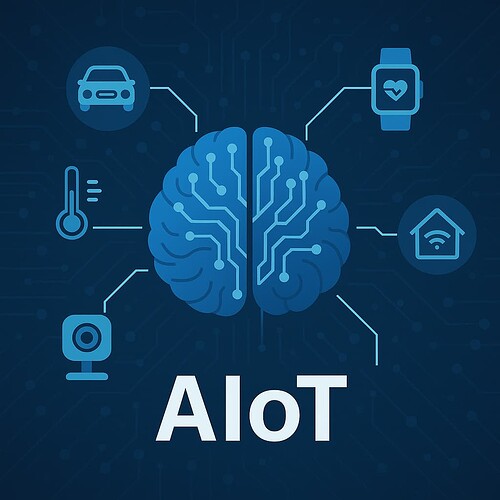Hello Experts.
Some of you might remember — a few years ago, I mentioned the concept of AIoT here in the forum… ![]()
Well, it has now become a reality! ![]()
It’s definitely worth learning more about this trend and understanding how it will shape the future.
AIoT: The Revolution of Artificial Intelligence Integrated with the Internet of Things
The combination of Artificial Intelligence (AI) and the Internet of Things (IoT) is shaping a new era of intelligent, connected systems, known as AIoT — Artificial Intelligence of Things. This integration significantly enhances the capabilities of IoT devices by incorporating AI’s analytical and decision-making power, resulting in more efficient, autonomous, and intelligent networks.
What is AIoT?
AIoT is the fusion of connectivity and intelligence. While IoT devices are responsible for collecting large volumes of raw data through sensors and interconnected systems, AI processes and interprets this information, identifying patterns, predicting outcomes, and making informed decisions.
This synergy transforms simple connected devices into systems capable of learning, adapting, and acting autonomously.
Key Characteristics of AIoT
1. Data Collection and Analysis
IoT devices capture vast amounts of data, which is then analyzed by AI algorithms. This analysis helps identify trends, predict failures, and optimize processes, adding intelligence to the connected environment.
2. Real-Time Decision Making
With AIoT, systems gain the ability to make instantaneous decisions without human intervention. This translates into faster and more efficient responses — crucial for applications like autonomous vehicles and industrial monitoring systems.
3. Enhanced Efficiency
By anticipating failures, optimizing processes, and improving human-machine interactions, AIoT boosts the overall efficiency of IoT systems. This combination can reduce operational costs and increase productivity across various industries.
4. Diverse Applications
AIoT is already a reality in multiple sectors — from smart cities to Industry 4.0, healthcare, and transportation. Its versatility makes it essential for developing innovative and sustainable solutions.
Practical Examples of AIoT
- Predictive Maintenance:
IoT sensors continuously monitor critical machine parameters, while AI algorithms analyze this data in real time to predict maintenance needs. This prevents unexpected breakdowns, reduces costs, and optimizes production.
- Smart Cities:
AIoT is used to efficiently manage traffic flow, optimize energy consumption, and improve public safety through coordinated, connected, and intelligent devices.
- Healthcare:
AIoT-based solutions enable continuous patient monitoring, early detection of medical conditions, and the development of personalized treatment plans, promoting more effective and human-centered care.
The Future of AIoT
In essence, AIoT represents the fusion of ubiquitous connectivity and artificial intelligence, creating systems capable of learning, adapting, and making autonomous decisions. This technological evolution is driving profound transformations across various sectors, ushering in a new era of efficiency, safety, and innovation.
As intelligence and connectivity become increasingly intertwined, AIoT is solidifying itself as one of the key drivers of digital transformation.
